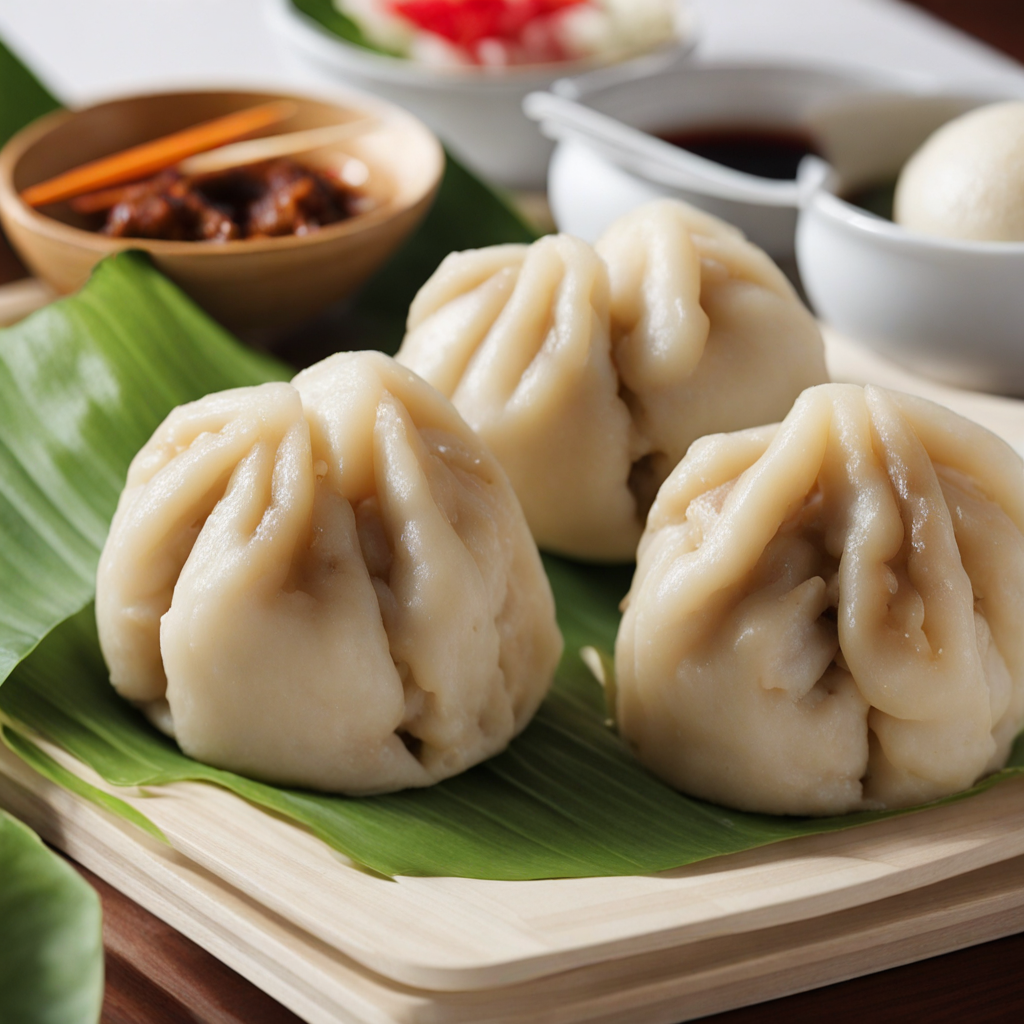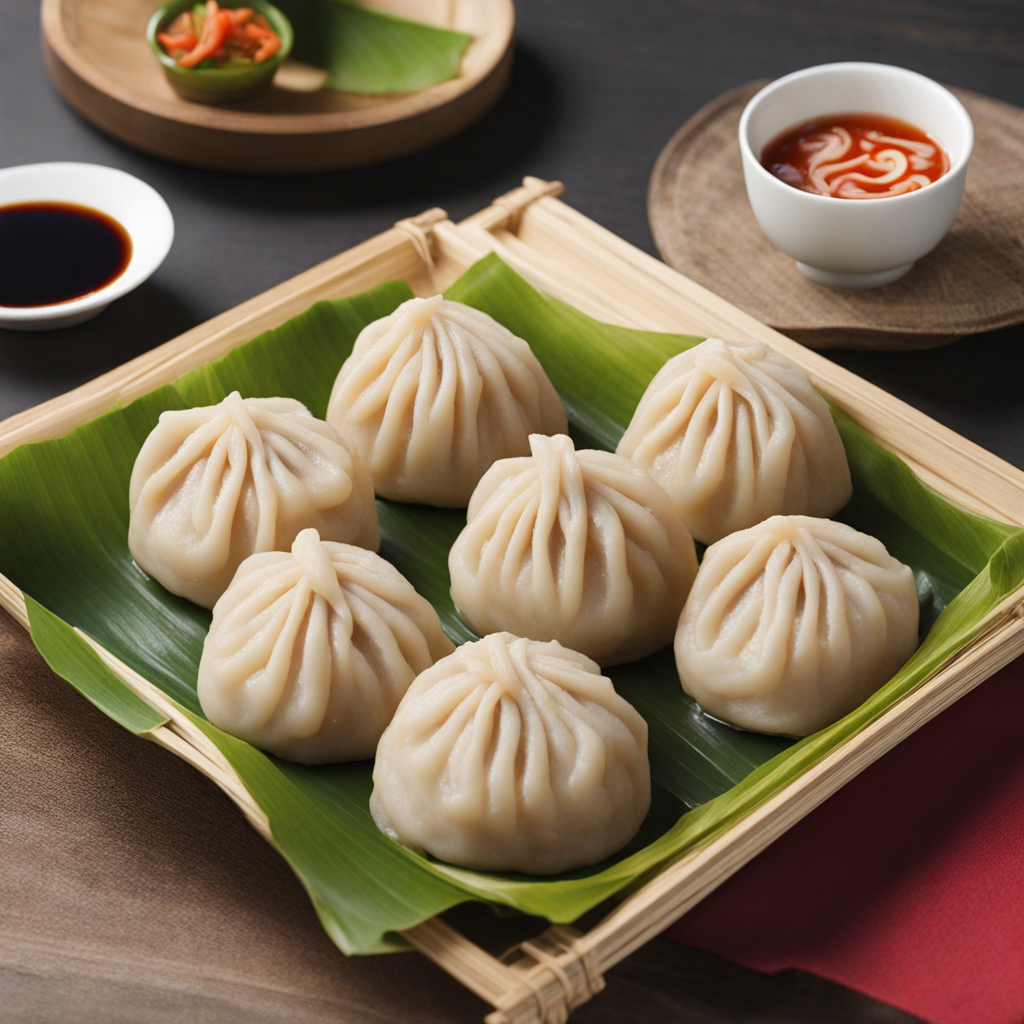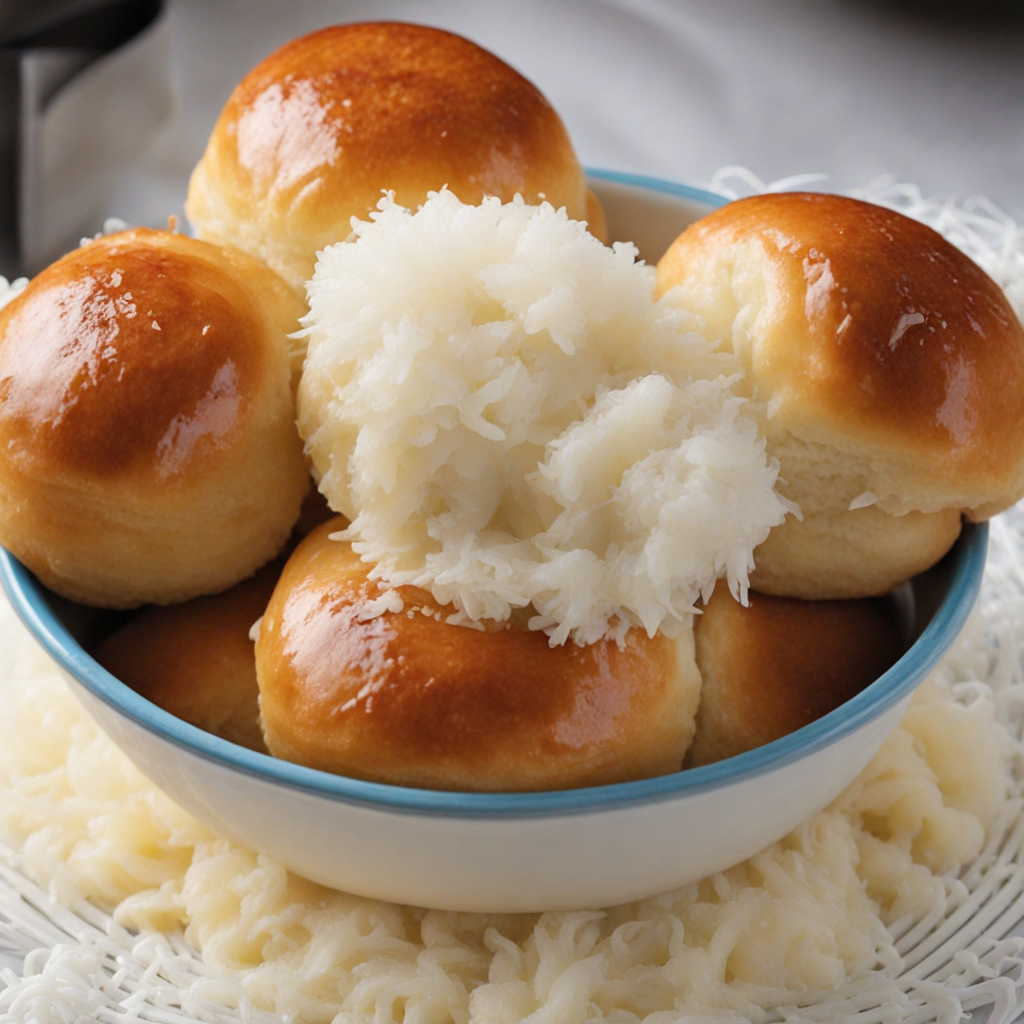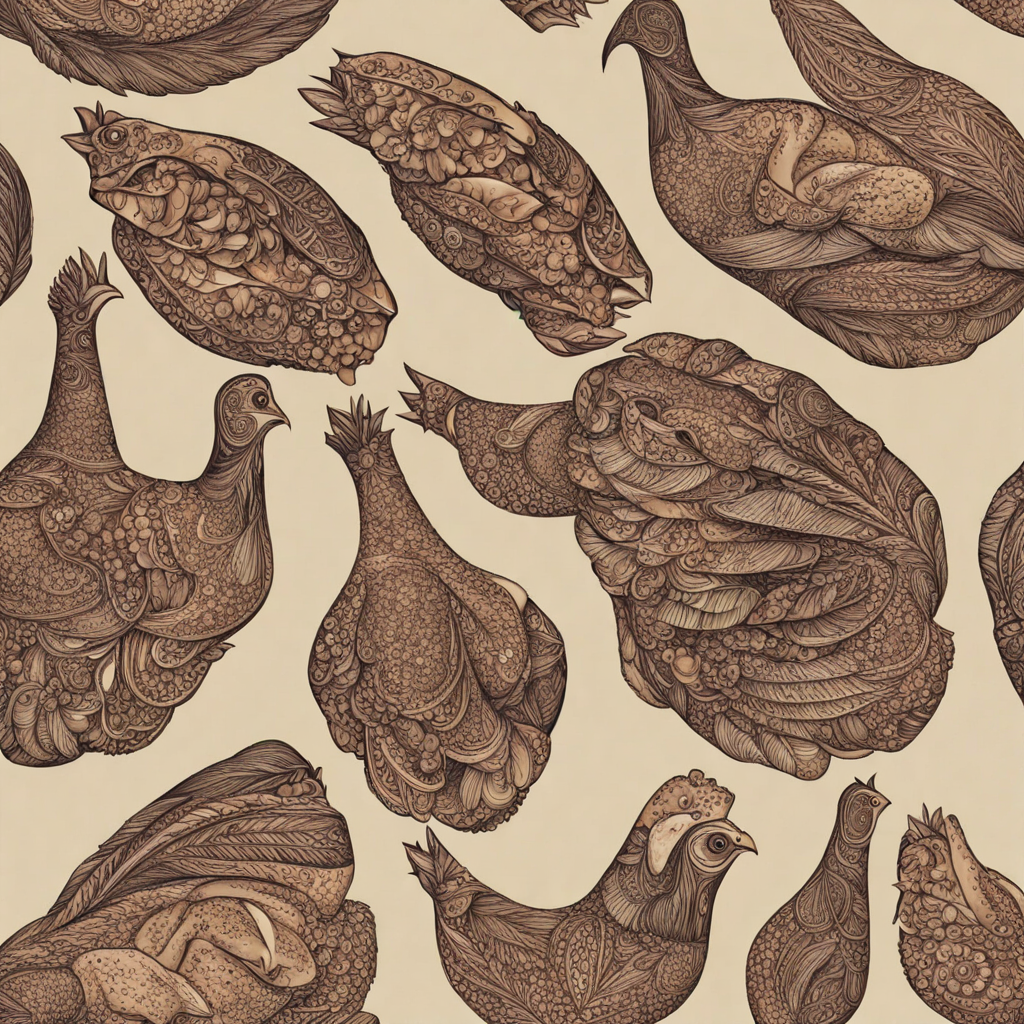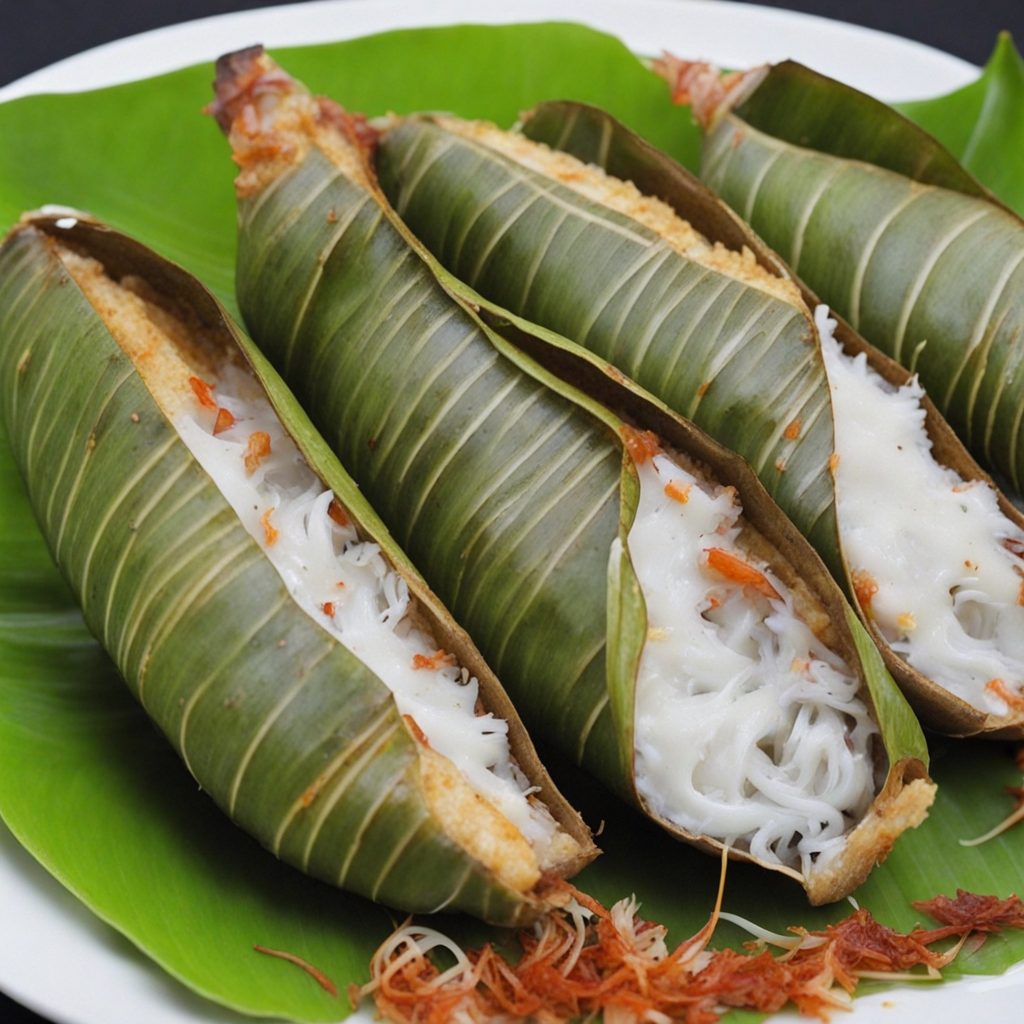Keke pua'a
Keke pua'a is a delightful Samoan dish that beautifully showcases the island's rich culinary heritage. At its core, this dish features a unique blend of pork, which is marinated and then wrapped in a soft, fluffy batter made from flour, sugar, and coconut milk. The combination of savory and sweet flavors creates a harmonious balance that is both satisfying and comforting. The pork is often seasoned with traditional spices, enhancing its taste and giving it a distinctive aroma that can transport you straight to the lush landscapes of Samoa with each bite. The preparation of keke pua'a involves a traditional method where the marinated pork is encased in the batter and deep-fried until golden brown. This cooking technique ensures that the outer layer is crispy while the inside remains tender and juicy. The texture is a key element of this dish, as the crackling exterior contrasts beautifully with the succulent meat. Keke pua'a is not only a feast for the taste buds but also an experience for the senses, as the fragrant spices and coconut milk waft through the air during cooking. This dish is often enjoyed at celebrations and special gatherings, making it a cherished part of Samoan culture. It is typically served warm and can be complemented with a side of fresh tropical fruit or a simple salad for a refreshing touch. Eating keke pua'a is more than just savoring a meal; it's about embracing a shared experience that brings people together, making it a must-try for those looking to explore new and exciting flavors from the Pacific Islands.
How It Became This Dish
The History of Keke Pua'a: A Culinary Treasure of Samoa Keke pua'a, a traditional Samoan dish, is more than just a delightful treat; it embodies the rich cultural heritage and communal spirit of the Samoan people. This beloved food, often referred to as pork buns, showcases the island's agricultural bounty and the profound connection between food and cultural identity. To understand keke pua'a, we must explore its origins, cultural significance, and evolution over time. #### Origins: A Culinary Confluence The roots of keke pua'a can be traced back to the early Polynesian settlers who inhabited the islands of Samoa around 3,000 years ago. These voyagers brought with them a wealth of culinary knowledge and agricultural practices, cultivating crops like taro, yams, and coconuts, and raising pigs, which would become a staple in Samoan cuisine. The name "keke pua'a" translates to "pig cake," indicating the dish's primary ingredient: pork. This culinary creation is a product of the natural resources available in Samoa, where pigs are not only a source of sustenance but also play a significant role in the island's social fabric. Traditionally, pigs are raised in family compounds and are often used in communal feasts and celebrations, embodying the spirit of sharing and hospitality that characterizes Samoan culture. Keke pua'a is typically made by preparing a filling of seasoned pork, which may include ingredients like onions, garlic, and various spices, then encasing it within a dough made from flour, sugar, and coconut milk. The dough is rolled into small balls, filled with the pork mixture, and then steamed or baked until golden. This method of preparation reflects the Polynesian techniques of cooking, influenced by traditional practices of steaming food using hot stones or in earth ovens. #### Cultural Significance: More than Just Food Keke pua'a holds a special place in Samoan culture, representing community, family, and tradition. Food in Samoa is deeply intertwined with social gatherings, celebrations, and rituals. Keke pua'a is often prepared for significant events such as weddings, birthdays, and cultural festivals, symbolizing abundance and the joy of sharing with loved ones. The preparation of keke pua'a is frequently a communal activity, where family members come together to knead the dough, prepare the pork filling, and assemble the buns. This collective effort strengthens family bonds and reinforces the values of cooperation and unity. In many Samoan households, the act of cooking is often seen as an expression of love and care for one another. Moreover, keke pua'a is a dish that transcends generations. Elders pass down their recipes and cooking techniques to younger family members, ensuring that the tradition remains alive. This handover of culinary knowledge not only preserves the dish itself but also serves as a conduit for storytelling, allowing families to share their history and cultural practices through food. #### Development Over Time: Adaptation and Innovation As Samoa has evolved, so too has keke pua'a. The arrival of European explorers and missionaries in the 18th and 19th centuries introduced new ingredients and cooking methods, which have been assimilated into Samoan cuisine. For instance, the incorporation of refined sugar and wheat flour into keke pua'a reflects a broader trend in Pacific island nations of adapting traditional recipes to include Western influences. In contemporary Samoa, keke pua'a has gained popularity beyond its traditional roots. It is now commonly found in markets, cafes, and restaurants, appealing to both locals and tourists. The dish has also sparked various adaptations, with fillings ranging from spicy pork to vegetarian options that incorporate local vegetables and legumes, catering to diverse dietary preferences. This adaptability ensures that keke pua'a remains relevant in a rapidly changing culinary landscape. Additionally, the globalization of food culture has led to increased interest in Samoan cuisine on the international stage. Keke pua'a, with its delectable flavor and cultural significance, has become a symbol of Samoan identity, introduced at food festivals and cultural events around the world. This exposure allows for a broader appreciation of Samoan culinary arts and highlights the importance of preserving indigenous food practices in a globalized world. #### The Future of Keke Pua'a As Samoa continues to navigate the complexities of modernization and cultural preservation, keke pua'a stands as a testament to the resilience of Samoan culinary traditions. Efforts to promote local agriculture and support sustainable food practices remain vital in ensuring that future generations can enjoy this cherished dish. Moreover, with the rise of the farm-to-table movement and a growing emphasis on healthy eating, keke pua'a can be reimagined to incorporate organic and locally sourced ingredients, aligning with contemporary dietary trends while remaining true to its roots. This evolution of keke pua'a not only celebrates its historical significance but also embraces the future of Samoan cuisine. #### Conclusion: A Symbol of Heritage and Community Keke pua'a is much more than a delicious pork bun; it is a symbol of Samoa's rich history, cultural identity, and communal values. Its origins in ancient Polynesian culinary practices, its role in social gatherings, and its ability to adapt over time reflect the dynamic nature of food as a cultural artifact. As we savor the flavors of keke pua'a, we are reminded of the stories it carries, the hands that have shaped it, and the communities that continue to cherish it. In every bite, we taste the essence of Samoa—the spirit of hospitality, the importance of family, and the enduring legacy of a vibrant culture. As keke pua'a continues to evolve, it remains a vital part of Samoan life, inviting both locals and visitors to experience the warmth and richness of Samoan hospitality through its culinary heritage.
You may like
Discover local flavors from Samoa


